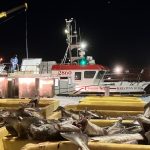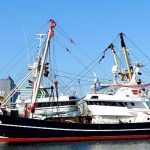It is observed that farmed Atlantic salmon has gone up anywhere from 50 cents to 75 cents a pound in the past few weeks, and wild Pacific salmon is at an all-time high. According to experts the most noteworthy cause of the shortage is the closure of California’s wild salmon fisheries. Salmon is caught off the Pacific coast of the United States and Canada from spring through fall in scores of discrete “runs.”
It is said that each run refers to the time that one of six species of salmon, chum, coho, king (chinook), pink, sockeye and steelhead, returns from the ocean to its river of origin to spawn, or lay eggs. Brian Gorman, of the federal agency’s Northwest region, informed that before the start of fishing the National Marine Fisheries measures how many salmon are returning and decides whether there are enough of them to permit commercial fishing.
It is observed that the number falls well below the threshold, 120,000 returning salmon is considered the minimum just to ensure reproduction. According to Gorman five years ago about 750,000 chinooks came back to the Sacramento. Thus, the feds closed the fishery for the rest of the year.
Gorman pointed out that the main reason for such decline is salmon’s unfortunate evolutionary fate of “hanging out where humans hang out during a crucial period of their lives.” It is said that in California, Oregon and, to a lesser degree, Washington, these waterways have been depleted by agricultural irrigation, and dammed for the production of electricity.
According to Gorman there are two anti-salmon forces, the destruction of spawning habitats and decreases in ocean upwelling. Dan Kim, a partner in the seafood importer Alaskan Feast, told that such hike in salmon prices is never happen before and it could be worse if reasons are not sorted out efficiently.








